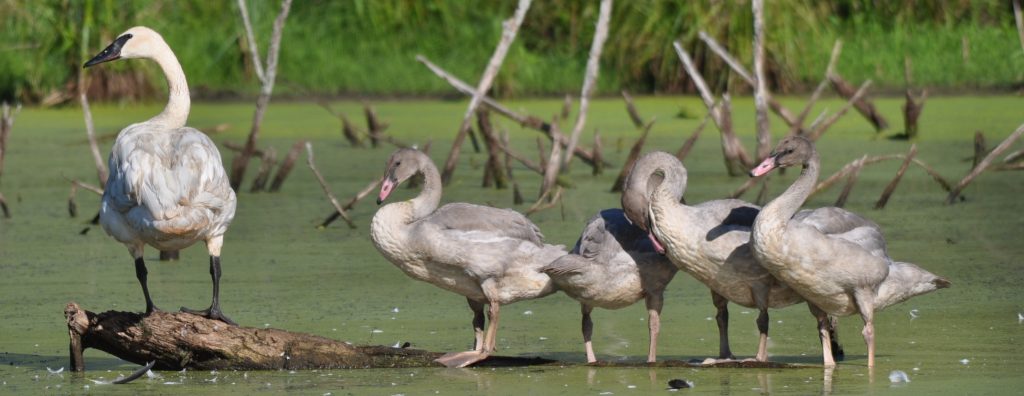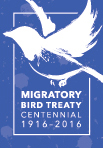Celebrating 100 years of international migratory bird conservation!

Following near extinction by the 1930’s, Trumpeter Swan populations have made a drastic recovery in Michigan and across the continent. Photo by Michigan Audubon
The signing of the Migratory Bird Treaty on August 16, 1916 marked the beginning of a unified, international effort to manage and conserve migratory birds across the U.S. and Canada. The Migratory Bird Treaty, and the Migratory Bird Treaty Act that followed in 1918, are responsible for the recoveries of several treasured bird species that were near the brink: Kirtland’s Warbler, Bald Eagle, and Trumpeter Swan, just for starters. Read more about this historic treaty or explore an interactive timeline of Bird Conservation History.
Although threats to birds have changed since that time, the migratory birds that we know and love still face difficult challenges. Habitats are disappearing and declining in quality, climates are shifting, invasive species are threatening, and people young and old are losing touch with the natural world. How can you help? Pledge to make a change for birds.
There are many ways we can contribute:
- Incorporate native plants into landscaping (Michigan bird-friendly plants, WildType Nursery sale days Aug. 26-28, five important shrubs for fall migrants)
- Encourage your office building or city to participate in Great Lakes Safe Passage
- Make your windows bird-friendly
- Teach a child to appreciate birds and nature (BirdSleuth teaching resources; Take a Child Outside week Sept. 24 – 30)
- Participate in citizen science (Chimney Swift Watch 2nd weekend in September, Breeding Bird Survey, eBird, Christmas Bird Count, take up “patch birding“)
- Drink bird-friendly coffee
- Volunteer your time with conservation groups you care about (like Michigan Audubon!)
It is up to us to continue the great work of the Migratory Bird Treaty for another 100 years. By making a change for birds, you are contributing to a brighter future for birds and people alike.



